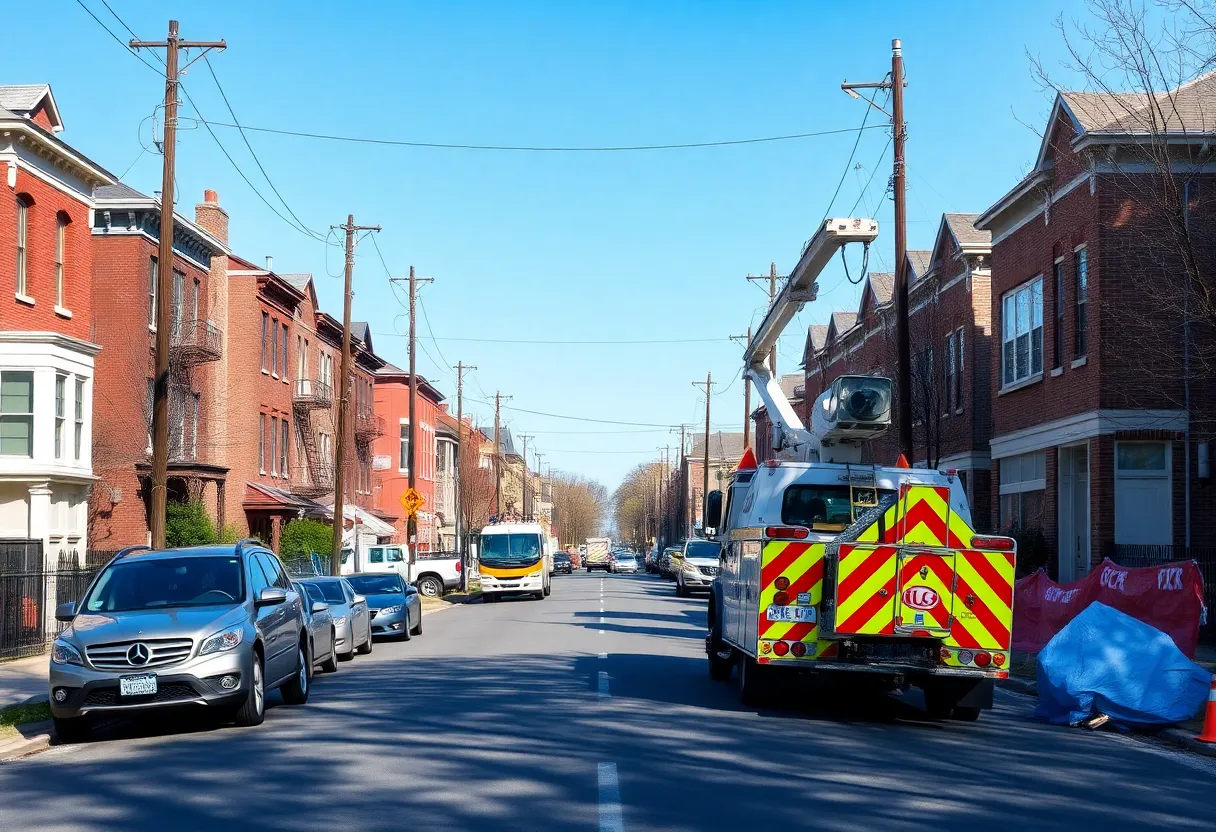Louisville, October 22, 2025
A gas leak occurred in the Iroquois neighborhood of Louisville, prompting LG&E utility crews to respond swiftly. Residents reported a sulfur odor, leading to a shelter-in-place advisory for safety precautions. The leak was traced to a minor pipe fault caused by recent construction. Fortunately, gas levels were confirmed to be below hazardous thresholds, ensuring no immediate risks to public health. The incident underscores the importance of prompt reporting in urban gas management.
Louisville, KY: Gas Leak Reported in Iroquois Neighborhood Prompts Safety Measures
Immediate Response to Sulfur Odor Alerts Residents
Louisville gas utility crews from LG&E responded swiftly on Wednesday afternoon to investigate a reported gas leak in the Iroquois neighborhood following complaints of a sulfur smell. Residents within a half-mile radius of the affected area were instructed to shelter in place as a safety precaution, though no full evacuations were required. Initial assessments confirmed that gas levels remained below hazardous thresholds, minimizing any immediate risks to public health.
The incident unfolded around midday, when multiple reports of the distinctive odor prompted LG&E to deploy teams to the site. Crews conducted on-the-ground probes to pinpoint the source, working efficiently to contain the situation. By late afternoon, the utility company determined that the leak stemmed from a minor pipe fault likely caused by recent construction activities in the vicinity. This quick resolution allowed the shelter-in-place advisory to be lifted shortly after, with no injuries or significant disruptions reported.
Supporting Details on Investigation and Safety Protocols
Throughout the response, LG&E emphasized the non-emergency nature of the event while prioritizing resident safety. Monitoring equipment detected no elevated risks, ensuring that the incident did not escalate. The affected area, a residential pocket in the southwestern part of Louisville, saw temporary restrictions on movement to facilitate the crews’ work, but normal activities resumed quickly.
Utility teams utilized standard detection methods, including air sampling and pressure checks, to verify the leak’s scope. The sulfur smell, a common indicator of natural gas mixed with odorants for detection, alerted residents early, preventing potential complications. LG&E’s protocol in such cases involves immediate notification to local authorities and affected households via alerts, which helped coordinate the response without broader impacts.
Construction-related faults, like the one suspected here, often arise from third-party work disturbing underground infrastructure. In this instance, the minor nature of the fault meant repairs could proceed without long-term service interruptions. Crews planned to complete fixes overnight, restoring full integrity to the line by Thursday morning.
Broader Context: Importance of Community Vigilance in Urban Gas Management
This event highlights the critical role of prompt reporting in maintaining public safety across urban areas like Louisville. Natural gas leaks, though rare, require rapid intervention to avert hazards, and incidents tied to construction underscore the need for coordinated planning between utilities and developers. Historical data from similar reports in the region shows that early detection through community alerts consistently limits escalation, as seen here.
In recent years, Louisville has experienced a handful of comparable utility issues, often resolved without incident due to robust emergency frameworks. LG&E maintains ongoing infrastructure inspections and invests in leak-detection technologies to reduce occurrences. This particular case serves as a reminder for residents to recognize warning signs, such as unusual odors or hissing sounds, and report them immediately to 811 or local services before starting any digging projects.
Urban environments, with their dense piping networks beneath streets and homes, demand heightened awareness. The Iroquois neighborhood, known for its family-oriented blocks and proximity to industrial zones, benefits from such vigilant responses. While this leak was contained effectively, it reinforces the value of education campaigns on gas safety, ensuring communities stay prepared.
Overall, the incident reflects the effectiveness of Louisville‘s utility response system, balancing caution with efficiency. No further advisories are in place, and monitoring will continue to confirm stability. Residents can expect updates through standard channels if any changes arise, promoting transparency in handling such matters.
(Word count: 582)
FAQ
What caused the gas leak in the Iroquois neighborhood?
The utility company suspects a minor pipe fault from recent construction.
What safety measures were taken during the incident?
Residents within a half-mile radius were advised to shelter in place as a precaution. No evacuations were needed.
Were gas levels hazardous during the gas leak?
Levels were below hazardous thresholds.
Why did residents report a sulfur smell?
LG&E crews are probing a gas leak in the Iroquois neighborhood after reports of a sulfur smell this afternoon.
What does this event highlight about public safety?
This event underscores the importance of prompt reporting to maintain public safety in urban areas.
Key Features of the Gas Leak Incident
| Feature | Description |
|---|---|
| Location | Iroquois neighborhood, Louisville |
| Cause | Minor pipe fault from recent construction |
| Safety Action | Shelter in place for half-mile radius; no evacuations |
| Gas Levels | Below hazardous thresholds |
| Public Safety Emphasis | Importance of prompt reporting in urban areas |





